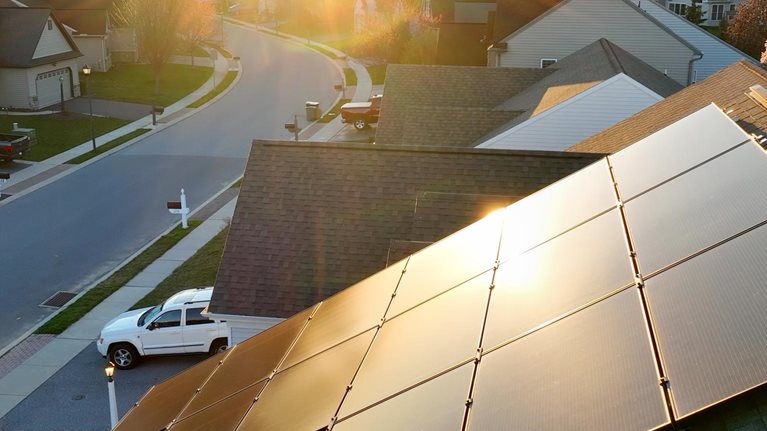Methane emission abatement and flaring reductions are central to global decarbonization, especially for the upstream oil and gas (O&G) sector. Upstream O&G accounts for roughly 7 percent of total global greenhouse gas (GHG) emissions, and half of that comes from methane.
Since 2021, when many O&G players committed to the Global Methane Pledge (GMP),1 the call to cut methane emissions has only grown stronger. Regulatory, corporate, and social pressures are mounting to further reduce methane emissions. At COP28 in December 2023, organizations representing up to 50 percent of global oil production signed the Oil & Gas Decarbonization Charter (OGDC),2 targeting “near-zero methane emissions” and “zero routine flaring” by 2030. In light of this momentum, companies without a plan to cut their upstream emissions may choose to make one soon.
We have analyzed the potential for upstream O&G players to cut their emissions to meet these targets (see sidebar, “Our methodology”). The good news is that the technologies for reducing methane emissions and flaring are available and mature enough to make huge strides at a relatively low cost or even for financial gain. But implementation will require a significant capital investment in methane evacuation, such as natural gas pipelines, and transportation infrastructure, including liquefied natural gas (LNG) terminals and tankers.
O&G emission reduction could offer some of the lowest-effort, highest-impact GHG mitigation available anywhere—and with the right collaborative actions, significant reduction is achievable by 2030. This strategy is one of many levers available to the industry for meeting climate goals. Our analysis suggests that the upstream sector has the potential to halve its GHG footprint through approaches that are cost neutral or even financially beneficial. Although accurately estimating methane emissions is notoriously difficult, this reduction corresponds to up to two gigatons (Gt) of CO2 equivalent (CO2e) per year—or as much as 4 percent of the world’s GHG emissions.
The challenge in achieving this reduction is that on top of these technology costs, substantial new infrastructure—and therefore capital investment—is needed. We estimate the total investment required to unlock this abatement to be approximately $200 billion, of which $120 billion would be for extensive infrastructure to bring recovered methane to existing pipelines or to the nearest gas demand centers. The size of this capital investment will require, in many cases, involvement beyond individual O&G players.
Deployment of methane abatement, flaring reduction, and overall operational excellence solutions will require technology implementation and systematic approaches. Development and financing of new infrastructure will require new financing mechanisms, along with close and innovative cooperation among many stakeholders—but the result would be a meaningful decline in global GHG emissions for an attainable cost by 2030.
The growing commitment to methane abatement
Recently, upstream O&G companies have accelerated their efforts toward methane and CO2 emission reduction. On top of new and broader regulations that include methane taxes, a renewed focus on net zero from institutional investors and a growing social awareness of climate change have driven an increasing number of global O&G players to set decarbonization targets.
For example, corporate commitments from the GMP and the OGDC, including goals for near-zero methane emissions and zero routine flaring by 2030, involve commitments from more than 50 companies, including many of the world’s largest. We calculate that up to 50 percent of global oil production falls under these methane abatement targets. Meeting these targets will reduce emissions by 0.6 GtCO2e per year by 2030, which corresponds to a 15 percent decline in total upstream O&G emissions (Exhibit 1) and a 1 percent decline in global GHG emissions. The Middle East, where a large proportion of players have made abatement commitments, and Africa and Latin America, where methane emissions represent a large proportion of upstream emissions, show the largest abatement potential.

Players responsible for an additional 10 to 15 percent of O&G production have announced their intent to reduce methane but haven’t yet translated this into actionable plans or made their plans public. An additional push to do so may come from several recent global methane-regulating policies, including the EU methane directive, which standardizes O&G operations in the European Union and sets stringent methane-emission-intensity targets for O&G products imported into the European Union.
In light of this momentum, companies without a plan to cut their upstream emissions may choose to make one soon.
The global picture of upstream oil and gas emissions
GHG emissions have never been higher, with an average of above 50 GtCO2e emitted each year over the past decade.3 Direct emissions from the upstream O&G sector are approximately 7 percent of this total (3.9 GtCO2e) per year, with methane contributing almost half of this amount. Upstream O&G is the second-largest methane-emitting sector (after agriculture). However, the extent of methane emissions remains wildly uncertain because methane is difficult to measure and monitor: according to McKinsey analysis, global annual methane emission estimates range from 1.1 GtCO2e to 5.9 GtCO2e. We have used a consensus figure of 2.1 GtCO2e per year, which is, if anything, a lower bound. Multiple satellites—some sponsored by governments, some privately funded, and the latest developed by a nongovernmental organization—are now tracking methane emissions at ever-higher resolution from orbit. Other instruments for measurement are used on the ground at extraction sites. This uncertainty means that the impact of methane emission reductions could be even greater than we report here.
There are four main sources of emissions in upstream O&G: direct release of methane, intentionally via venting or unintentionally via fugitive emissions; CO2 emissions from combustion to produce electricity, heat, or mechanical work for drilling and machinery; CO2 emissions from flaring methane; and direct venting of CO2 that is present in recovered gases (Exhibit 2).

Carbon and methane emission intensities are unevenly distributed across the globe (Exhibit 3). The highest emissions are found in Africa, the Commonwealth of Independent States (CIS), and Latin America. Currently, these regions have fewer countries that have committed to the GMP or endorsed the Zero Routine Flaring initiative, which provides incentives to prevent methane leakages.

Global differences in emission intensity also arise because of geological factors and the types of operations involved. The highest intensity comes from unconventional assets such as shale gas and other geologically challenging-to-extract sources and from deepwater offshore assets, all of which require extra energy to recover.
How to mitigate methane and flaring emissions


Some solutions are easier to implement than others: introducing energy efficiency measures and reducing methane leakage and flaring can save money, while electrification and carbon capture and storage come at a significant cost. Operational excellence principles and methane leakage and flaring reduction are mature technological solutions, so they should be relatively easy to adopt—and the costs to implement them will be even lower by 2030. But none of these is a silver bullet. Each location will have its own optimal set of solutions, depending on local circumstances.
The path to cutting two gigatons
Our analysis of these solutions shows that beyond the 0.6 GtCO2e per year already under methane and flaring abatement commitments in upstream O&G, an additional 1.4 GtCO2e could be eliminated using cost-neutral or very-low-cost solutions such as maximized operational efficiency or leaked gas recovery (Exhibit 5). This represents an additional 35 percent of all O&G upstream methane emissions. Abating this combined 2.0 GtCO2e per year would halve the carbon footprint of the upstream O&G sector and cut total global GHG emissions by up to 4 percent. No other sector could cut emissions by this much solely by addressing its own operational inefficiencies.

The solutions that would get this done include methane recovery via active leakage monitoring (including with AI), operational excellence, flaring reduction, and vent capture systems. According to our estimates, the investment needed to deploy core abatement technologies is $80 billion.
However, the above-listed solutions often require additional infrastructure. In particular, most sites require new gas evacuation routes to transport captured methane from recovery sites to the nearest gas pipelines or demand centers—or clean ways to use and monetize the methane nearby. We estimate that the infrastructure needed to recover this methane will require an investment of $120 billion.


New pipelines, which would require permitting, may not be the answer everywhere. Certain locations may be more suitable for alternative methane utilization solutions such as modular LNG or compressed natural gas, direct power production such as gas-to-power conversion, or emerging technologies such as methane-to-methanol conversion. This may also be true for locations where pipelines exist but don’t have the capacity to carry more methane.
It’s important to note that using recovered gas in these new ways may trigger other climate trade-offs. For example, in Africa, using recovered methane directly for power would replace small, efficient diesel generators, which would offset some of the climate gains from methane recovery. In other places, however, methane recovery could provide cleaner power than what is used now.
Developing the necessary infrastructure will require the use of innovative financing mechanisms and close cooperation among international majors, national oil companies, and smaller local players. Establishment of targeted investment funds and regulatory schemes could unlock additional abatement potential. The large capital requirement and the challenges of deployment make it impossible for individual players to undertake this alone.
Effective methane reduction programs necessitate a multidimensional approach to establish precise methane emission baselines, develop robust mitigation plans, and deploy essential enablers—including securing targeted funding and fostering strategic partnerships for implementation.
Targeted cooperation of upstream O&G players on methane and flaring reduction could reduce the world’s greenhouse gas emissions by 4 percent by 2030. When compared with the alternatives in other sectors, this may be the lowest-cost 4 percent emission cut available to the planet, offering the oil and gas sector the opportunity to take the lead on the path to net zero while addressing its own emissions. With only five years to 2030, there’s no time to lose.


